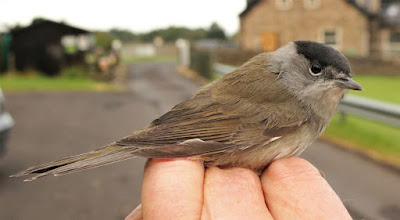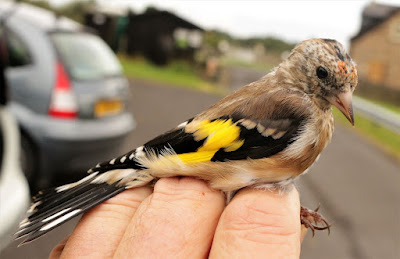Monday 8 July and an early Barn Owl did not hang around and anyway I was on the way to meet with Andy at 0630 at a ringing site out Pilling Way.
A more than average morning ensued in the way of 29 birds caught – 26 new and 3 recaptures. The morning showed evidence of post breeding arrivals of both adults and juveniles from the site itself and with arrivals of species not seen here in 2024 until now. Yes, July is Bird Autumn UK when post breeding activity and dispersal points to the beginning of true migration quite soon.
As can be seen in these few photographs, of the 29 birds caught almost every one displayed signs of moult, post juvenile or adult post-breeding shedding and regrowth.
Reed Warbler 19 (16 new and 3 recaptures from this year.
Sedge Warbler 1
Blackcap 2 - a male and a female both in breeding condition, the male heard in song near our mist nets.
Chiffchaff 2 juveniles of this year.
Goldfinch 2 – a male and a female side by side in a mist net.
A single adult Lesser Whitethroat was in pretty heavy moult, too scruffy a look to display here,
Wren 2.
Reed Warbler
Blackcap
Blackcap
Goldfinch
This was a morning of hidden arrival as opposed to visible movement of birds above our watch and ringing station, a shelf of the Picasso hatchback containing rings and ringing equipment.
A large and partly stooping Peregrine came to our attention thanks to a bunch of ever vigilant crows. Otherwise a few croaking egrets and a handful of Swallows feeding across nearby fields. The loss of our once numerous Swallows is a national catastrophe that no one seems able or willing to tackle. I now have maybe one or two places where there is a chance of photographing a Swallow.
We heard news of a Sand Martin we ringed at Cockerham last August, a “3J”, the input code for a bird of the year in question.
Ringed at the quarry site 19 July 2023, ALJ4229 was found dying on May 29 2024 at Pennyghael, Isle of Mull, Argyll and Bute. A sad end to a couple of spectacular journeys. The finder reported the martin as a "swallow" - sadly the Average Joe does not know common British birds.
Sand Martin ALJ4229
Sand Martin ALJ4229
3J Sand Martin
Gone Birding
Back Soon Everyone.

















































































